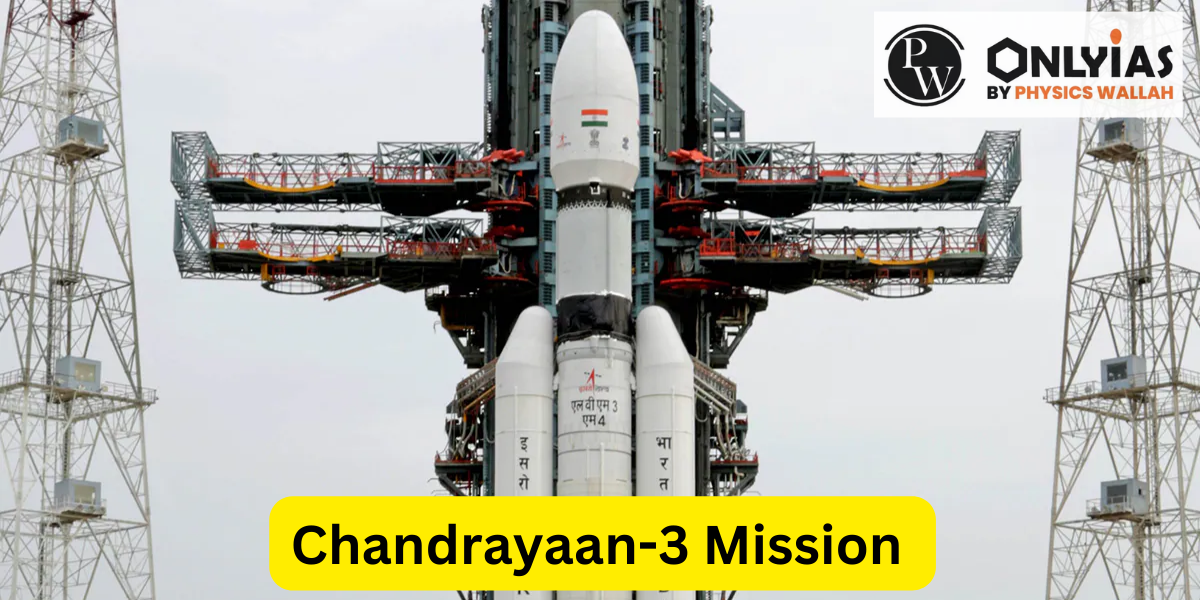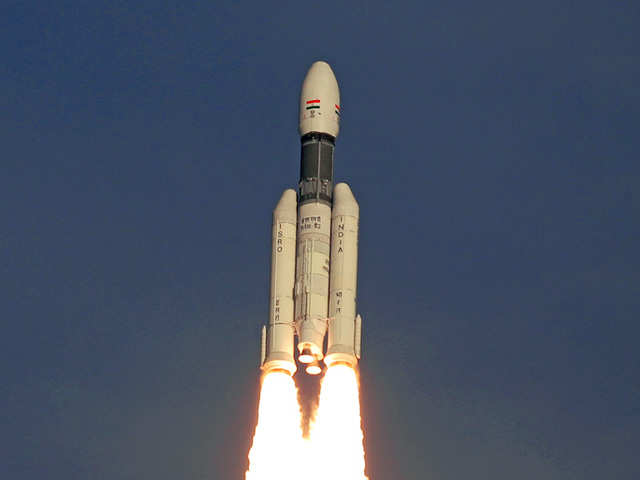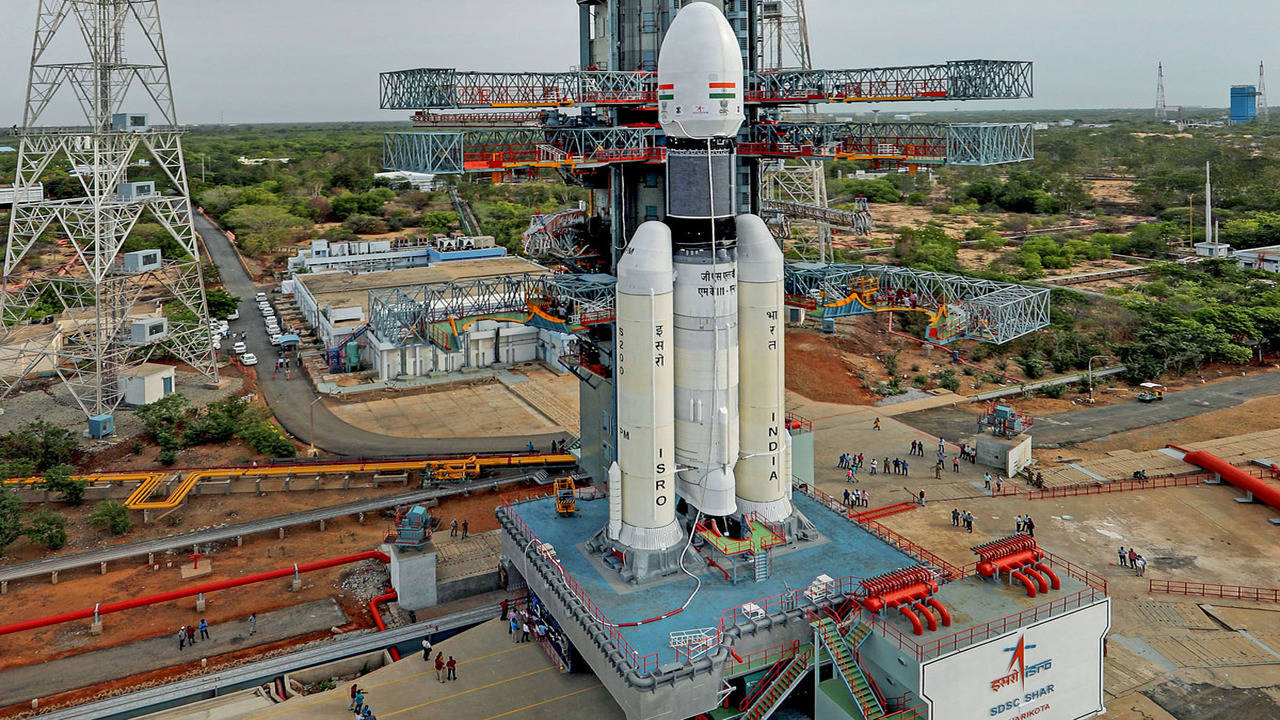The Indian Space Research Organisation (ISRO), India's space agency, initiated the launch of Chandrayaan-3 on July 14, 2023, a mission aimed at exploring the Moon.

Chandrayaan-3: The Indian Space Research Organisation (ISRO), India’s space agency, initiated the launch of Chandrayaan-3 on July 14, 2023, a mission aimed at exploring the Moon. The objective is to achieve a gentle landing on Earth’s natural satellite, following in the footsteps of the previous successful missions, Chandrayaan-1 and Chandrayaan-2. The third lunar mission is expected to expand the horizons of space exploration and technological advancement.
Recent studies conducted by ISRO and researchers from the Physical Research Laboratory (PRL), Ahmedabad, have provided significant insights into the geological characteristics of Chandrayaan-3’s landing site, named Shiv Shakti Point. The findings confirm the site’s age, surface composition, and crater impact, offering a deeper understanding of the Moon’s evolution.
Key Findings of Chandrayaan-3 Landing Site
Chandrayaan-3 was successfully launched on 14 July 2023 at 2:35 pm IST. In the first phase, the lunar injection was completed, placing it in a circular polar orbit at an altitude of 100 km. The next phase involves the landing of the lander and rover near the lunar south pole region, which is expected to occur on 23 August 2023.
As per ISRO officials, Chandrayaan-3 is expected to land on the surface of the moon either on 23rd August or at the latest, 24th August. The mission was initiated on 14th July from the Satish Dhawan Space Centre in Sriharikota, and the estimated landing time is approximately 40 days. The primary objective is to achieve a soft landing on the moon’s southern pole, and the entire mission is anticipated to span around 14 days, equivalent to one lunar night.
India’s heaviest launch vehicle, GSLV Mk-III, will transport Chandrayaan 3 to its designated destination. The primary objective of this mission is to achieve a soft landing on the lunar surface. Currently, only three countries, namely India, Russia, and China, have successfully reached this milestone.
[/radius_table]
| Name of the Mission | Chandrayaan-3 |
|---|---|
| Integration | Spacecraft integrated with Launch Vehicle Mark-III (LVM3) |
| Landing Date | 23-24 August |
| Launch Date | 14 July 2023 |
| Launch Location | Satish Dhawan Space Centre, Sriharikota, Andhra Pradesh |
| Total Budget | Rs 615 crore |
[/radius_table]
The Indian Space Research Organization (ISRO) has successfully conducted its third lunar exploration mission, aiming to further explore the Moon. The project officials have finalized a budget of 75 crores for the scientists involved in the mission. ISRO’s Chairman, K Sivan, officially announced that the total cost of the mission is estimated to be Rs 615 crore.
A significant portion of the investment is allocated to the development of the Chandrayaan 3 model. This model will include a rover and lander designed to reach the lunar surface. The dedicated efforts of the scientists involved in constructing Chandrayaan 3 have addressed the issues that led to the previous mission’s crash. With increased confidence, everyone involved is optimistic about the success of this mission.
Chandrayaan-3, launched from the Satish Dhawan Space Centre in Andhra Pradesh, is India’s latest space mission that follows the launch of Chandrayaan-2 nearly four years ago. Riding on the Geosynchronous Satellite Launch Vehicle Mark III (GSLV-MK III) heavy-lift rocket, Chandrayaan-3 represents India’s increasing dedication to advancing its presence in the global space community.

The Chandrayaan-3 mission, as outlined by the Indian Space Research Organisation (ISRO), encompasses three primary objectives. First, it aims to demonstrate a safe and controlled landing on the Moon’s surface, showcasing India’s capability to achieve precise landings on extraterrestrial bodies. Second, the mission seeks to carry out rover operations on the lunar terrain, allowing for enhanced exploration and data collection. Lastly, Chandrayaan-3 aims to conduct on-site experiments directly on the surface of the Moon, enabling scientific discoveries and advancements.
The objectives of the Chandrayaan-3 mission, as stated by ISRO, are threefold:
1. Demonstrate a safe and controlled landing on the Moon’s surface.
2. Carry out rover operations on the lunar terrain.
3. Conduct on-site experiments on the surface of the Moon.
Chandrayaan-3, the most recent space mission launched from the Satish Dhawan Space Centre in Andhra Pradesh, reflects India’s growing commitment to advancing its presence in the global space community. Riding atop the Geosynchronous Satellite Launch Vehicle Mark III (GSLV-MK III) heavy-lift rocket, Chandrayaan-3 aims to build upon the accomplishments of its predecessor, Chandrayaan-2, which was launched almost four years ago.
Chandrayaan, India’s lunar exploration program, has achieved significant milestones and also faced some setbacks throughout its history. Here are the key achievements and setbacks of the Chandrayaan program:
Following are the Achievements of Chandrayaan-1 Mission:
1. Lunar Orbit Insertion: Chandrayaan-1 successfully entered the lunar orbit on November 8, 2008.
2. Discovery of Water Molecules: The Moon Mineralogy Mapper (M3) instrument aboard Chandrayaan-1 discovered the presence of water molecules on the lunar surface.
3. Mapping the Moon: Chandrayaan-1 mapped the Moon’s surface, providing valuable data on its topography, mineralogy, and chemical composition.

1. Early termination of the mission: The mission was initially planned to last for two years. However, due to technical issues, communication with the spacecraft was lost on August 29, 2009, just ten months after its launch. The mission had to be terminated prematurely, leading to the loss of potential scientific data that could have been collected during the extended mission duration.
2. Failure of the Moon Impact Probe: The Moon Impact Probe (MIP), a small instrument intended to impact the lunar surface, detach from the main spacecraft, and perform a scientific experiment, encountered technical problems during its descent. As a result, it crashed onto the lunar surface instead of executing the planned experiment, limiting the data that could have been obtained from that specific mission component.
3. Loss of the Moon Mineralogy Mapper (M3): The Moon Mineralogy Mapper, an instrument provided by NASA as part of the Chandrayaan-1 mission, encountered technical issues and stopped functioning in August 2009. The M3 was designed to map the lunar surface’s mineral composition, and its failure restricted the mission’s ability to gather detailed mineralogical data.
4. Limited operational timeline: The mission faced challenges due to its limited operational timeline. The planned two-year mission duration meant that the spacecraft had a relatively short period to gather data and conduct experiments. The premature termination further curtailed the mission’s potential scientific output.
5. Communication and data transmission issues: During the mission, there were occasional difficulties in communication and data transmission between the spacecraft and ground stations. These issues occasionally disrupted the flow of data and caused temporary setbacks in the mission’s operations.
Chandrayaan-2 was India’s second lunar exploration mission, launched by the Indian Space Research Organisation (ISRO) in July 2019. Although the mission faced some setbacks, it also achieved significant milestones. Here are the achievements and setbacks of the Chandrayaan-2 mission:
1. Orbiter Insertion: The mission successfully placed the Chandrayaan-2 spacecraft into the lunar orbit. The Orbiter played a crucial role in conducting various scientific experiments and providing communication support throughout the mission.
2. Imaging and Mapping: The Orbiter captured high-resolution images of the lunar surface, providing valuable data for scientific research and future exploration. It also created a comprehensive three-dimensional map of the Moon’s surface, including details of its topography and mineral distribution.
3. Vikram Lander: The mission aimed to soft-land the Vikram Lander near the lunar south pole. Although the lander faced a setback during the landing phase, the achievements leading up to that point were notable. The Lander performed a successful descent and demonstrated many critical functions, such as trajectory correction maneuvers and fine braking thruster operations.

1. Lander Landing: The most significant setback of the Chandrayaan-2 mission was the unsuccessful landing of the Vikram Lander. During the final phase of the descent, the lander deviated from its planned trajectory and communication with it was lost. The exact cause of the failure was later determined to be a software glitch in the lander’s guidance and navigation system.
2. Pragyan Rover: The Pragyan Rover, carried by the Vikram Lander, was designed to explore the lunar surface, conduct experiments, and send data back to Earth. Unfortunately, due to the lander’s unsuccessful landing, the rover was not deployed and couldn’t fulfill its intended objectives.
Despite the setback of the lander’s unsuccessful landing, the Chandrayaan-2 mission achieved many milestones and contributed significantly to our understanding of the Moon. The Orbiter continues to function and gather valuable data, extending the mission’s scientific objectives and paving the way for future lunar missions. The lessons learned from Chandrayaan-2 will be crucial for India’s future space exploration endeavors.
In the past, spacecraft have primarily landed in the vicinity of the Moon’s equatorial region, a few degrees north or south of the lunar equator. This choice is driven by the ease and safety associated with landing in this area. The equatorial region offers a favorable terrain, a smooth surface, minimal steep slopes, and abundant sunlight for instruments powered by solar energy.
In contrast, the lunar south pole poses significant challenges. The terrain in this area is rugged, and temperatures can be extremely low. Furthermore, certain regions remain in permanent shadow, receiving no sunlight at all. These factors make landing and operating spacecraft in the lunar south pole region more difficult and complex.
Water Resources: The south pole region is believed to contain significant amounts of water molecules, potentially trapped as ice in the permanently shadowed craters. Investigating and confirming the presence of water is crucial for future human missions and the potential utilization of lunar resources.
Scientific Discoveries: The extreme environment and the existence of permanently shadowed regions provide a preserved record of the Moon’s history and the early Solar System. Exploring the south pole can lead to significant scientific discoveries and a better understanding of the Moon’s formation and evolution.
Clues to Earth’s History: The Moon is hypothesized to have formed from debris created by a colossal impact between a Mars-sized object and the early Earth. Studying the lunar south pole can provide insights into the materials and conditions that existed during the formation of the Earth-Moon system, offering valuable clues about Earth’s own history.
Global Collaborations: Collaborations between ISRO and NASA have successfully confirmed the presence of water through data collected by Chandrayaan-1. Initiatives like the Indo-Japan collaboration LUPEX aim to send a lander and rover to the Moon’s south pole by 2024, fostering global partnerships in lunar exploration.
Technological Advancements: By undertaking missions to the Moon’s south pole, ISRO can develop and demonstrate innovative technologies for soft landing, navigation, resource utilization, and long-duration operations. These advancements can be applied to future space missions, contributing to the overall technological progress in the field.
Should Chandrayaan-3 prove successful, it would mark India's inaugural achievement of successfully placing equipment on the moon's surface. Despite already having satellites circling the moon, specific types of data can only be gathered from the lunar surface, distinguishing it from the data obtained from orbit.
यदि चंद्रयान-3 सफल होता है, तो यह भारत की पहली सफल चंद्रमा लैंडिंग होगी। भारत के पास तो चंद्रमा की परिक्रमा करने वाले उपग्रह हैं, लेकिन कक्षा से एकत्र किए गए डेटा के विपरीत, कुछ विशेष डेटा केवल ब्रह्मांडीय पिंड की सतह से ही एकत्र किए जा सकते हैं।
Chandrayaan 3's primary goal is to successfully land softly on the moon's surface, enabling chemical analysis and the discovery of novel technologies necessary for upcoming missions to other planets.
India achieves a major breakthrough in space exploration as it effectively launches Chandrayaan-3, signifying a noteworthy accomplishment. This event serves as a testament to India's resolute dedication to progress in the fields of space science and technology.
Ritu Karidhal, known as the 'Rocket Woman of India,' is at the forefront of India's ambitious lunar space endeavor, Chandrayaan 3. The launch of the mission took place triumphantly at the Satish Dhawan Space Centre in Sriharikota.

<div class="new-fform">
</div>